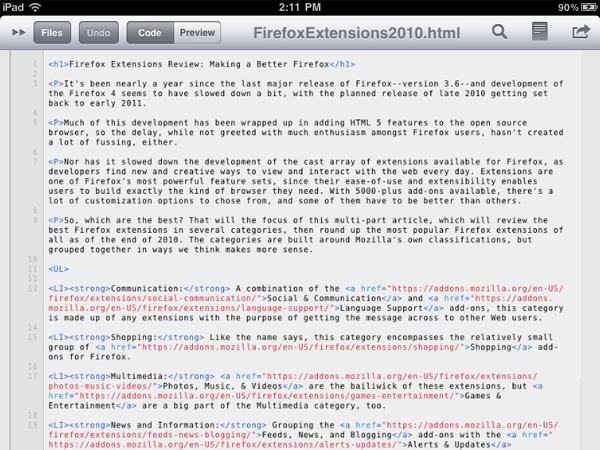

Other than that, Gusto is extremely simple. That can be a bit tedious if you've got several directories to navigate through often. Unlike Diet Coda, you won't see a breadcrumb trail at the top. When you're done, just select the local files you want to upload, navigate to the directory you want them in, or create a new one, and tap Upload.

From here you can navigate through files and copy them over locally to start editing them. Once you've connected your screen will split into two panes: one for localhost files and one for remote files.

The first time you tap into a site, select the wrench in the top and select Connect to in order to pull a list of files. Tapping into any one of them will bring up a main page. Just like Diet Coda, the main page will show you a splash page of all the sites you've set up access to. Even though the main screen shares a striking resemblance the the way Coda pins sites in an easy to organize board, Gusto has its own flow once you're inside documents.
TEXTASTIC FEATURES CODE
Gusto has been around for quite some time and was my go-to code editor for on the fly changes mainly because it reminded me of Coda, which is my main editor on my Mac. You'll access site information and set up access the same way you would in Diet Coda but that's where the similarities will end. Gusto for iPad shows many similarities to Diet Coda and feels like it may have been inspired by it originally.


 0 kommentar(er)
0 kommentar(er)
